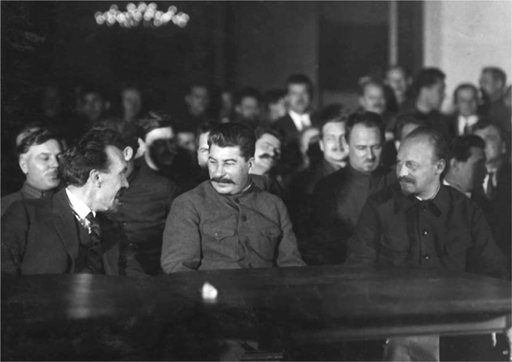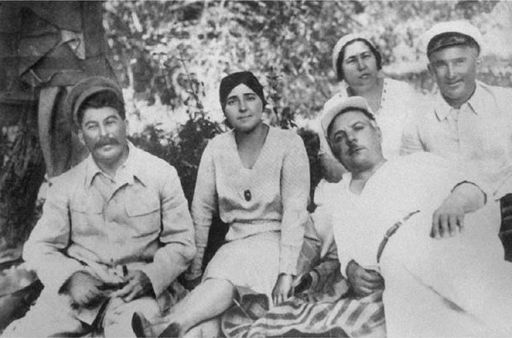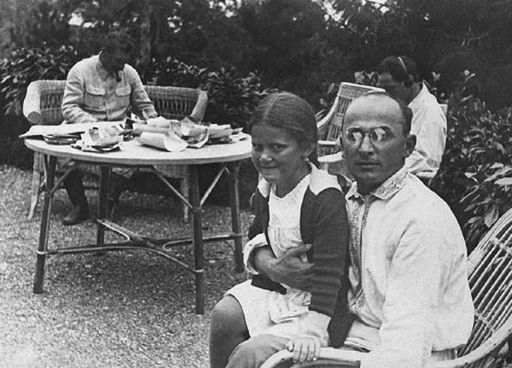Stalin (61 page)
Authors: Oleg V. Khlevniuk
Tags: #Biography & Autobiography, #Presidents & Heads of State, #History, #Europe, #Russia & the Former Soviet Union, #Modern, #20th Century

As the supreme authority, Stalin, of course, was all these correspondents’ prime addressee. It is hard to know the precise number of letters addressed to him personally, but it apparently exceeded several hundred thousand per year.
35
Obviously not all of them reached his desk; he was shown a selected sample. The nature of this sample is of interest from a number of perspectives. Primarily, it shows how well informed Stalin was about people’s lives and tells us what he expressed an interest in seeing. No doubt the apparat was given criteria for selecting the letters he would be shown.
35
Obviously not all of them reached his desk; he was shown a selected sample. The nature of this sample is of interest from a number of perspectives. Primarily, it shows how well informed Stalin was about people’s lives and tells us what he expressed an interest in seeing. No doubt the apparat was given criteria for selecting the letters he would be shown.
Handling letters addressed to Stalin was a complicated bureaucratic process. Within the Central Committee’s Special Sector, which served as Stalin’s personal secretariat, was a division dedicated to processing his mail. After the war this division was called the Special Sector’s “Fifth Section.” In early 1950 it had a staff of twenty.
36
They received and logged letters addressed to Stalin and immediately forwarded a significant portion of them to various agencies for review. The heads of the Special Sector, especially Stalin’s personal assistant, Aleksandr Poskrebyshev, were shown the most important and interesting letters.
37
Poskrebyshev further filtered them, leaving just a few of the most interesting for his boss. As a result of this tiered system, Stalin saw just a tiny percentage of the hundreds of thousands of letters sent to him, and over time this number shrank. In early 1946 Stalin saw about ten letters per month, but by 1952 he was shown just one or two.
38
36
They received and logged letters addressed to Stalin and immediately forwarded a significant portion of them to various agencies for review. The heads of the Special Sector, especially Stalin’s personal assistant, Aleksandr Poskrebyshev, were shown the most important and interesting letters.
37
Poskrebyshev further filtered them, leaving just a few of the most interesting for his boss. As a result of this tiered system, Stalin saw just a tiny percentage of the hundreds of thousands of letters sent to him, and over time this number shrank. In early 1946 Stalin saw about ten letters per month, but by 1952 he was shown just one or two.
38
This small sample revealed little about real life in the Soviet Union. Most of the letters reaching Stalin’s desk belonged to one of three categories: queries on matters of theory, letters from old acquaintances, and a large number of letters of support. On extremely rare occasions he might be shown correspondence that tiptoed around some unsavory aspect of Soviet reality. Overall, the letters he saw reflected the
vozhd
’s growing desire to live in the past or savor hopes for the future. Pressing matters of real consequence likely to provoke negative emotions were avoided.
vozhd
’s growing desire to live in the past or savor hopes for the future. Pressing matters of real consequence likely to provoke negative emotions were avoided.
As ignorant of the life of the people as the
vozhd
was, the people knew even less what kind of a man he was. Partly due to his personality and partly out of calculation, Stalin, unlike many other dictators, rarely spoke before large audiences. He preferred to express himself in writing. The aggressive propaganda of Stalin’s articles, interviews, and theoretical works created the impression that the invisible
vozhd
was ever-present and all-knowing. His cryptic sententiousness gave him a certain charisma.
vozhd
was, the people knew even less what kind of a man he was. Partly due to his personality and partly out of calculation, Stalin, unlike many other dictators, rarely spoke before large audiences. He preferred to express himself in writing. The aggressive propaganda of Stalin’s articles, interviews, and theoretical works created the impression that the invisible
vozhd
was ever-present and all-knowing. His cryptic sententiousness gave him a certain charisma.
Tight control over the alchemy of official “Staliniana” has created false and doubly majestic images of Stalin and his accomplishments.
39
These images outlive the man himself and have an appeal even in contemporary Russia. The collapse of the Soviet Union, the stresses of the transitional period, corruption, poverty, and glaring social inequality all feed the longing for a social utopia. A significant portion of Russian society seeks recipes for the present by looking to the Stalinist past. Popular images of the greatness of the Stalinist empire—of equality and the fight against corruption, of the joy and purity of this distant life undone by “enemies”—are exploited by unscrupulous commentators and politicians. How great is the danger that a blend of historical ignorance, bitterness, and social discontent will provide fertile ground for pro-Stalinist lies and distortions to take root?
39
These images outlive the man himself and have an appeal even in contemporary Russia. The collapse of the Soviet Union, the stresses of the transitional period, corruption, poverty, and glaring social inequality all feed the longing for a social utopia. A significant portion of Russian society seeks recipes for the present by looking to the Stalinist past. Popular images of the greatness of the Stalinist empire—of equality and the fight against corruption, of the joy and purity of this distant life undone by “enemies”—are exploited by unscrupulous commentators and politicians. How great is the danger that a blend of historical ignorance, bitterness, and social discontent will provide fertile ground for pro-Stalinist lies and distortions to take root?
Could it really be that Russia in the twenty-first century is in danger of repeating the mistakes of the twentieth?
ILLUSTRATIONS
Stalin’s mother, Ekaterine (Keke) Jughashvili.
Russian State Archive of Social and Political History.

Stalin as a pupil at the Gori Theological School in the early 1890s.
Russian State Archive of Social and Political History.

Stalin as a young revolutionary, early 1900s.
Russian State Archive of Social and Political History.

From party archives, a 1910 arrest record for Stalin from the files of the tsarist political police in Baku. Russian State Archive of Social and Political History.

Stalin at the Tsaritsyn front in 1918. Russian State Archive of Social and Political History.

Lenin and Stalin at Gorki, Lenin’s residence outside Moscow, in 1922, a few months before Lenin’s death prompted a fierce power struggle. Russian State Archive of Social and Political History.

Stalin with Rykov (left) and Bukharin (right), December 1927. Rykov and Bukharin were shot in 1938. Russian State Archive of Social and Political History.

The
vozhd
with his faithful comrades in 1934. Left to right: Kirov, Kaganovich, Ordzhonikidze, Stalin, and Mikoyan. Kirov was shot later that year by the husband of a staff member, and Ordzhonikidze committed suicide in 1937. Russian State Archive of Social and Political History.
vozhd
with his faithful comrades in 1934. Left to right: Kirov, Kaganovich, Ordzhonikidze, Stalin, and Mikoyan. Kirov was shot later that year by the husband of a staff member, and Ordzhonikidze committed suicide in 1937. Russian State Archive of Social and Political History.

Stalin with his wife, Nadezhda Allilueva, Voroshilov, and Voroshilov’s wife Yekaterina relaxing in the south in 1932 (with a bodyguard to the right) a few months before Nadezhda’s suicide. Russian State Archive of Social and Political History.

Other books
Riding Steele: Untamed by Opal Carew
The Deputy's Lost and Found by Stella Bagwell
A Place Called Home by Jo Goodman
[Texas Rangers 01] - The Buckskin Line by Elmer Kelton
The Murders in the Reed Moore Library by Ryan M. Welch
The Horseman's Bride by Elizabeth Lane
Pink Buttercream Frosting by Lissa Matthews
Land of Marvels by Unsworth, Barry
Unknown by Nabila Anjum
Proud to Serve Her (1 Night Stand Series) by Long, Heather